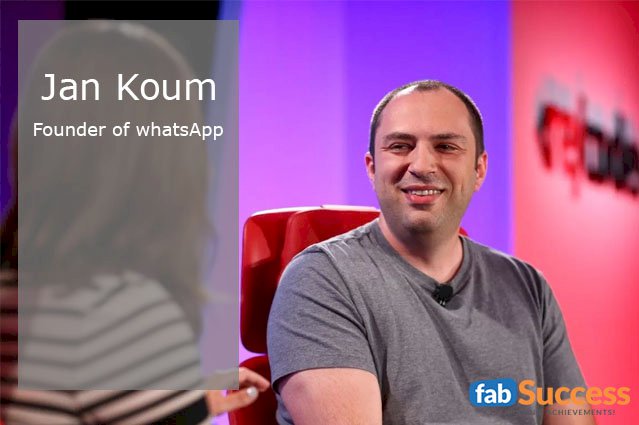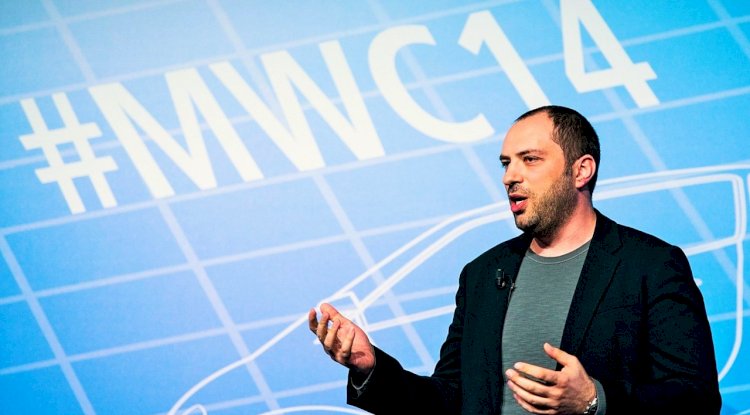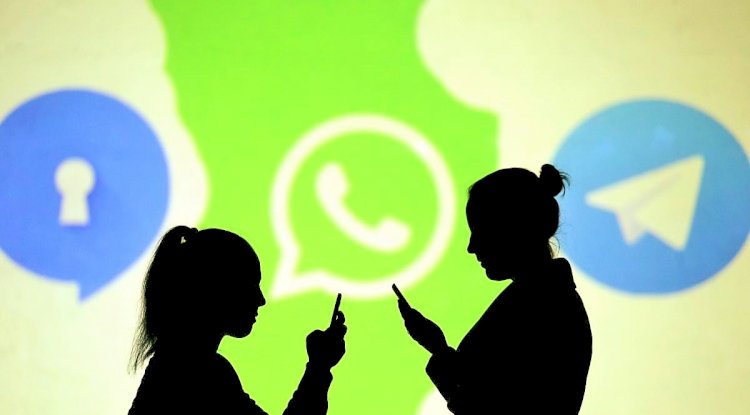Jan Koum Co-founder And CEO Of The Globally Famous Mobile Messaging Application – WhatsApp
Jan Koum - the story of What's App is yet another live example of innovation in true terms, for everyone out there waiting for motivation.
By Faber

Jan Koum Born on the 24th of Feb 1976 is the Co-founder and CEO of the globally famous mobile messaging application – WhatsApp. It was recently acquired by Facebook in February 2014 for a whopping $19 Billion.
In 2014, with an estimated worth of more than $7.5 Billion, he was listed as the 62nd richest person in America by Forbes. To add to that, Forbes also stated in another article that, Jan’s prodigy would also be the sole reason behind the loss of a combined total of $386 billion that will be incurred by the telecommunications industry between 2012 and 2018!
Nevertheless, the story of What's App is yet another live example of innovation in true terms, for everyone out there waiting for motivation.
But Jan is no stranger to failure and is a founder who had to go through his fair share of rejection by top tech companies, including the one that eventually bought their service, only to become the most valuable messaging platform on the planet.
Let’s tell you a tale that best exemplifies the phrase “try, try, try, till you succeed”!
The Hassle Of The Past…!
Jan was born in the rural areas of Kiev, Ukraine. This was during the Soviet Era, so being Jewish and living in a rural area was definitely not easy. He lived in a house that did not have electricity and being in a country that mostly had a temperature below 0 degrees; they didn’t even have hot water. His parents also denied the usage of phones because they were often tapped by the govt.
Hence, in an attempt to put an end to all this, they decided to move to America, and Jan along with his mother and grandmother moved to Mountain View, California in 1992.
Here they were helped by a social support program to get a small two-bedroom apartment. Jan also started learning computer networking by reading manuals that he used to purchase from a used bookstore.

On the other end, at the age of 16, he also had begun working as a cleaner at a grocery store while his mother worked as a babysitter. Just when things began to look normal is when another tragedy hit their lives, when his mother was diagnosed with cancer. But he always believed that whatever did not kill you, only made you stronger, and his adversities were only making him more resilient.
In the next two years, he had fully trained himself all about computer networking and all set to take up his next task.
This is when he gained a sudden interest in programming and got himself enrolled at San Jose State University. Along with that, he also began working with Ernst & Young as a Security Tester.
After working there for roughly six months, Jan got the biggest opportunity of his life when he got selected to work at Yahoo as an Infrastructure Engineer. Now, this was when he was still studying at San Jose State University.
The Concept
In January 2009, Jan bought an iPhone and realized that the then seven-month-old App Store was in the process of launching a whole range of new apps. This gave him a brilliant idea.
He quickly visited a friend of his named Alex Fishman in West San Jose, to discuss the same. An endless cup of tea combined with two passionate men took the discussion on the idea for hours. But eventually, the conclusion was that the whole idea was not possible without an iPhone developer.
Although the idea itself was a very young stage, since the beginning itself, they were very clear about three rules: their service would definitely not carry advertising, would have a satisfying experience, and lastly, keeping in mind the privacy of their customers in mind, their product would also not store any messages. Additionally, they would also maintain to deliver the product without any gimmicks or stunts, with an endless amount of reliability and rich experience.
Having that settled, Jan quickly got the name “WhatsApp” incorporated on his birthday i.e. 24th of Feb 2009 in California.
The Expanding Days…
Soon, the second version called WhatsApp 2.0 was also released. This was turned WhatsApp into Instant Messenger because it also had a messaging component. And just within a blink of an eye, they had 250,000 active users. He needed help.
Now, this was the time when Brian Acton was still unemployed and was trying to establish another unsuccessful start-up of his. Jan somehow convinced him and Brian decided to join What's App.
Anyway, soon they also got their first round of funding of $250,000, after a little persuasion, from five of their ex-Yahoo friends in against for a co-founder status and a stake.
And after staying in the beta stage for so many months, the app finally saw the daylight in November 2009 exclusively on the App Store for the iPhone. Soon another BlackBerry version was also made by an old friend called Chris Peiffer.
In no time, they also sub-leased a few cubicles on a converted warehouse on Evelyn Avenue. They didn’t even have a WhatsApp sign for the office, and the other half of the building was occupied by Ever-note.

Now since the two main co-founders used to work for free, the only biggest cost the company incurred during those first few years was sending verification texts to users. But fortunately, the best part was that WhatsApp was gradually bringing in revenue by charging customers a minimal charge to use the service, roughly $5000 / month (2010) which then was enough to cover the costs.
The founders occasionally also used to switch WhatsApp from a free to paid service to avoid growing too fast.
The app received tremendous success in a very less time. By 2011, it was listed amongst the top 20 of all apps in Apple’s U.S. App Store. This was also because the app was made such that the users found it pretty easy to use and they didn’t have to register on it to use it as well.
Now around that time, Jim Goetz from Sequoia Capital was desperately in search of the founders. They had originally discovered WhatsApp through an App store tracking system they had developed for their assistance called ‘early bird’.
Even then, it literally took months for the VC firm to trace them down, given that the company didn’t have a publicly available address at the time. And within a span of two years i.e. by 2013, WhatsApp had reached a user base of more than 200 million and a staffing of 50 employees.
This was the time the founders again thought of raising funds. Jan remembered his mother’s words, that never put yourself in a position where you can’t meet ends, in other words, always keep some extra bucks with you.
Well, Whats App earns millions of dollars without any advertising on the app. They make money in two ways: – They charged iPhone users on first-time installation and the Android users every year
And this money goes straight into their pockets.
While working with Yahoo, the founders had learned the tricks of the trade and knew for a fact that most of the users do not like advertisements flashing while using an application.
Visit Website
What's Your Reaction?



















